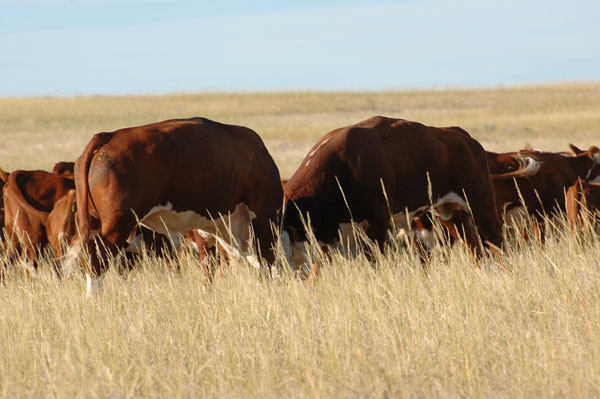You can have it all with genomics, but what do you really need?
July 16, 2015

Genomics are changing the game. Economic indexes are shooting forward because the economics of the business have changed, and while improving prices have caused seismic shifts in the $ indexes, it is impossible to not recognize that our business is also being driven by increased rates of genetic change in other areas as well.
The interesting thing with the increased rate of genetic change is the evolution of more selection targets. The seedstock industry used to move pretty much in lock step—we needed more growth, so everyone selected for more growth; then we needed to moderate mature size and the selection for curve benders began; then we had ultrasound data and carcass EPDs and the industry focused on improving carcass merit; and so on. The market would send signals, seedstock producers would respond, sometimes creating problems that then needed to be corrected, and the next chase would be on.

BEEF Seedstock 100
Looking for a new seedstock provider? Use our BEEF Seedstock 100 listing to find the largest bull sellers in the U.S. Browse the Seedstock 100 list here.
That doesn’t seem to be happening with genomics. Genomics are allowing producers to change cattle more rapidly than ever before. However, a resulting seedstock race to the extreme has not occurred because of a lack of consensus on selection targets.
Some are even looking at growth as now being a threshold trait, especially in those environments where the expression of growth will be limited. We are seeing similar thoughts relative to carcass traits. Plus, traits like feet, fertility, udder quality, fleshing ability and disposition, which are not as easily characterized or not adequately described at this point, are moving up the list of selection priorities.
Functionality is the buzzword everyone is focused on, but there doesn’t seem to be a broad-based consensus on how to define it. In fact, regardless of the target or breeding program, breeders almost universally claim that their cattle are functional and believe that those who are utilizing other targets are producing cattle that aren’t.
The result is that we have more divergence in selection parameters, more bulls being used, and more diversity in selection targets than ever before. From a cow-calf perspective, that is both a positive and a negative.
The right bull for the traits you want to improve is most likely available, but finding him may be more difficult than ever before. In the end, it probably ushers in a whole new business model. The extreme “outliers” will still have significant value, as they will allow for populations to change rapidly, and seedstock producers and their customers will likely work more closely together, corroborating on selection parameters and goals. Thus, those who have the most effective and accurate feedback loops will ultimately be the most successful.
That means feedback, not only from seedstock to cow-calf and vice versa, but from every segment of the business will increasingly be essential. It is ironic that as the ability to move population genetics faster through improved technology has evolved, the true competitive advantage may come from those with evidence of how those genetics are performing in the real world under real-world economic conditions. At one point, we believed that animal breeding might become all science, but as the science has improved, the need for the “art” side of animal breeding has grown perhaps even more than the science.
The opinions of Troy Marshall are not necessarily those of beefmagazine.com and the Penton Agriculture Group.
You might also like:
Why baleage has an advantage over dry hay
Can ranching be sustainable without profits? Burke Teichert says no
Can we measure cow efficiency? Not as a single trait
About the Author(s)
You May Also Like



